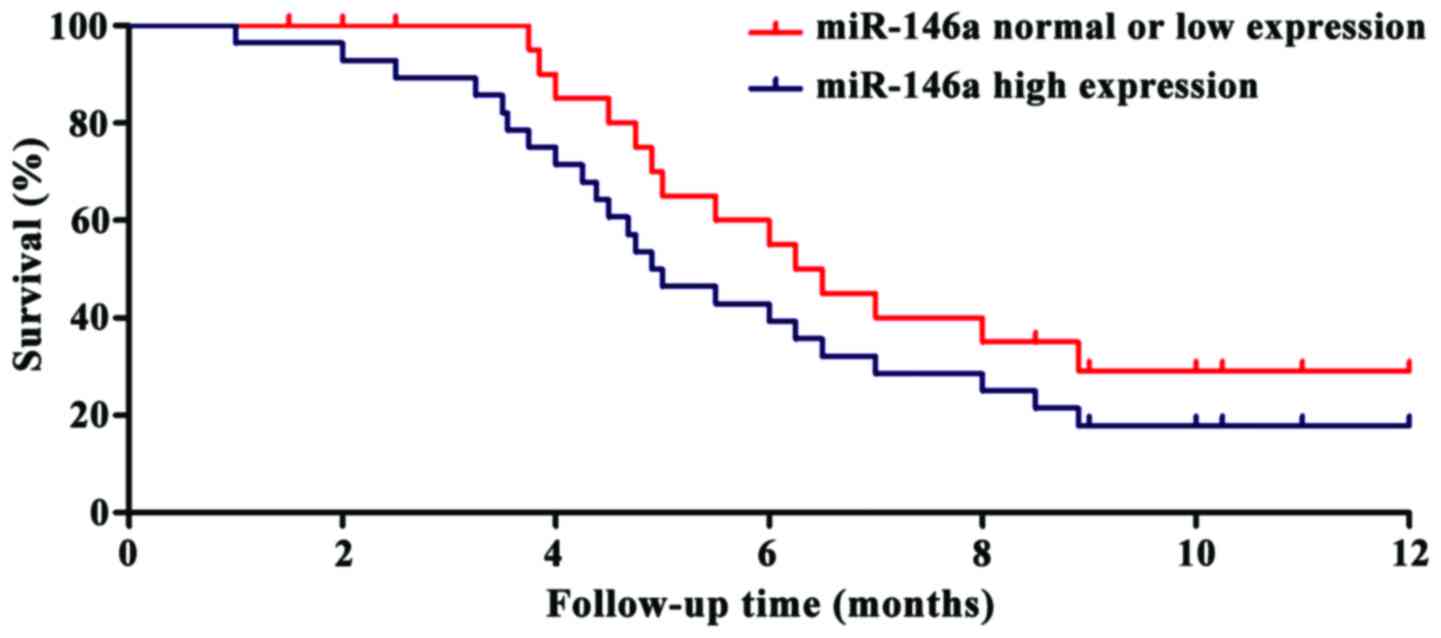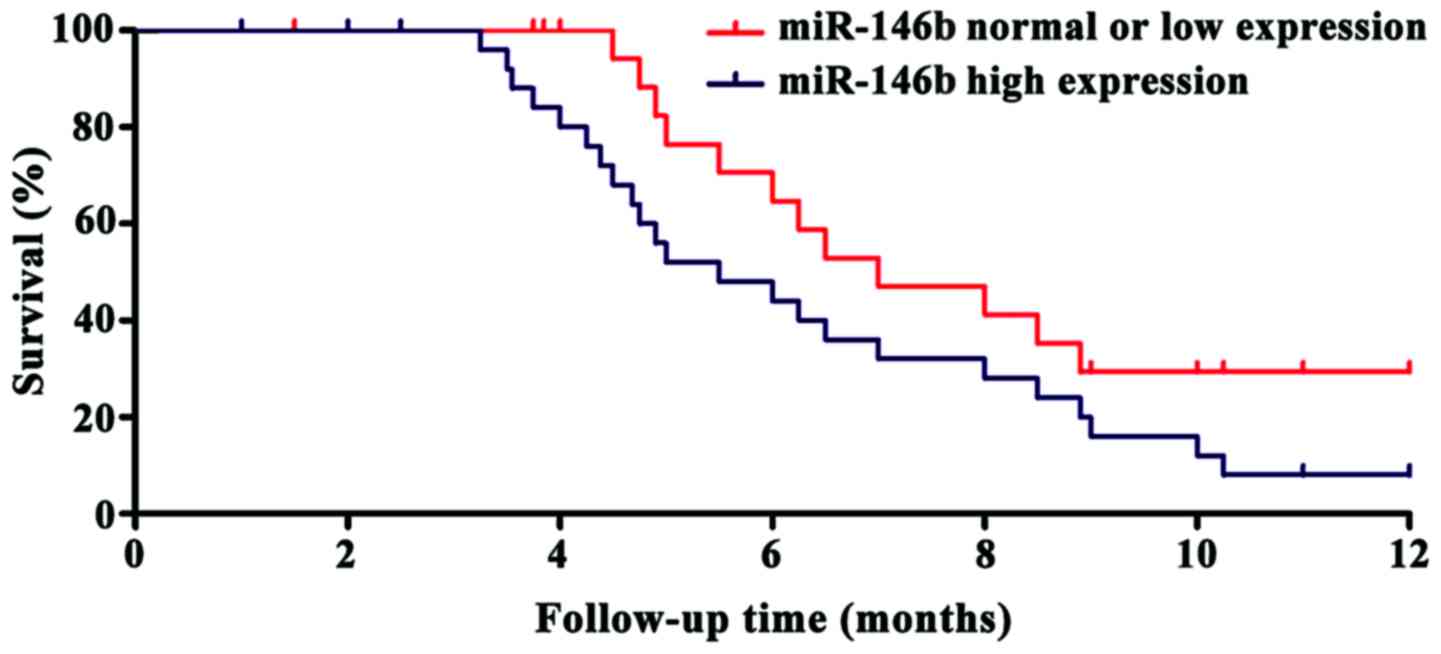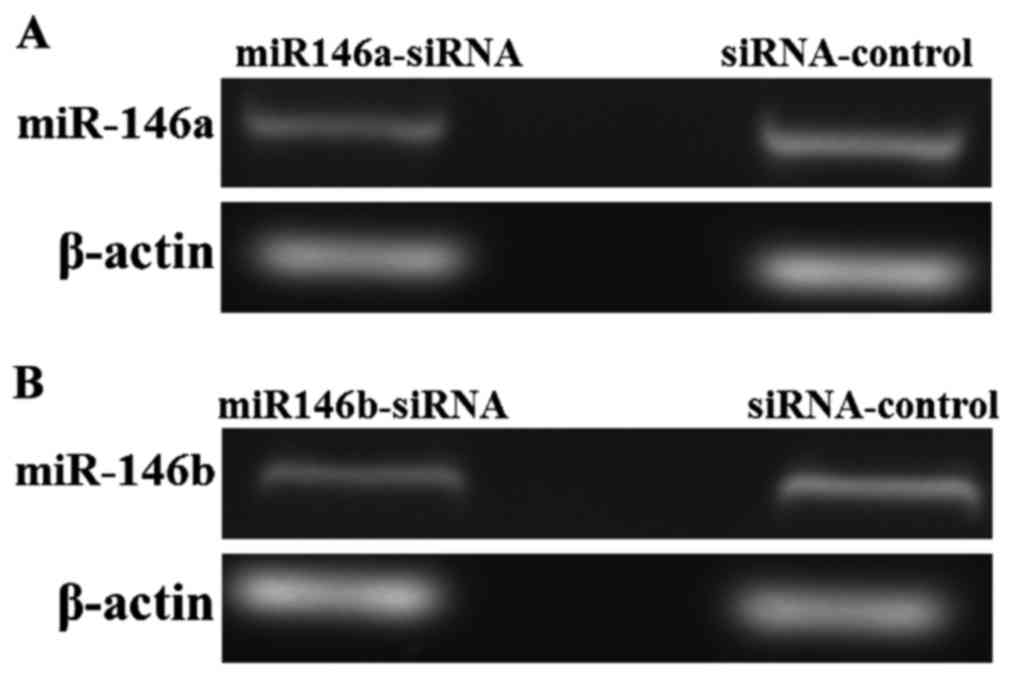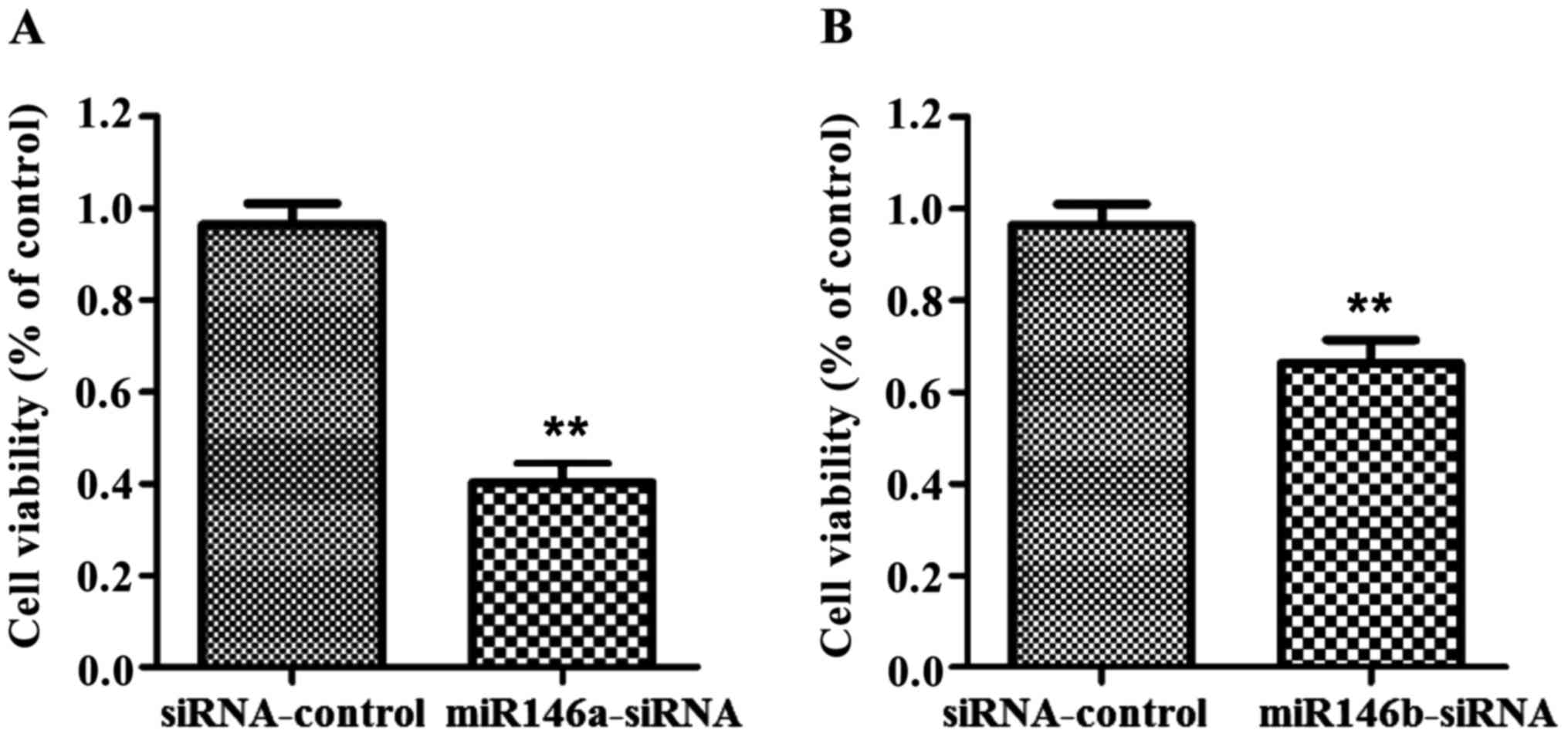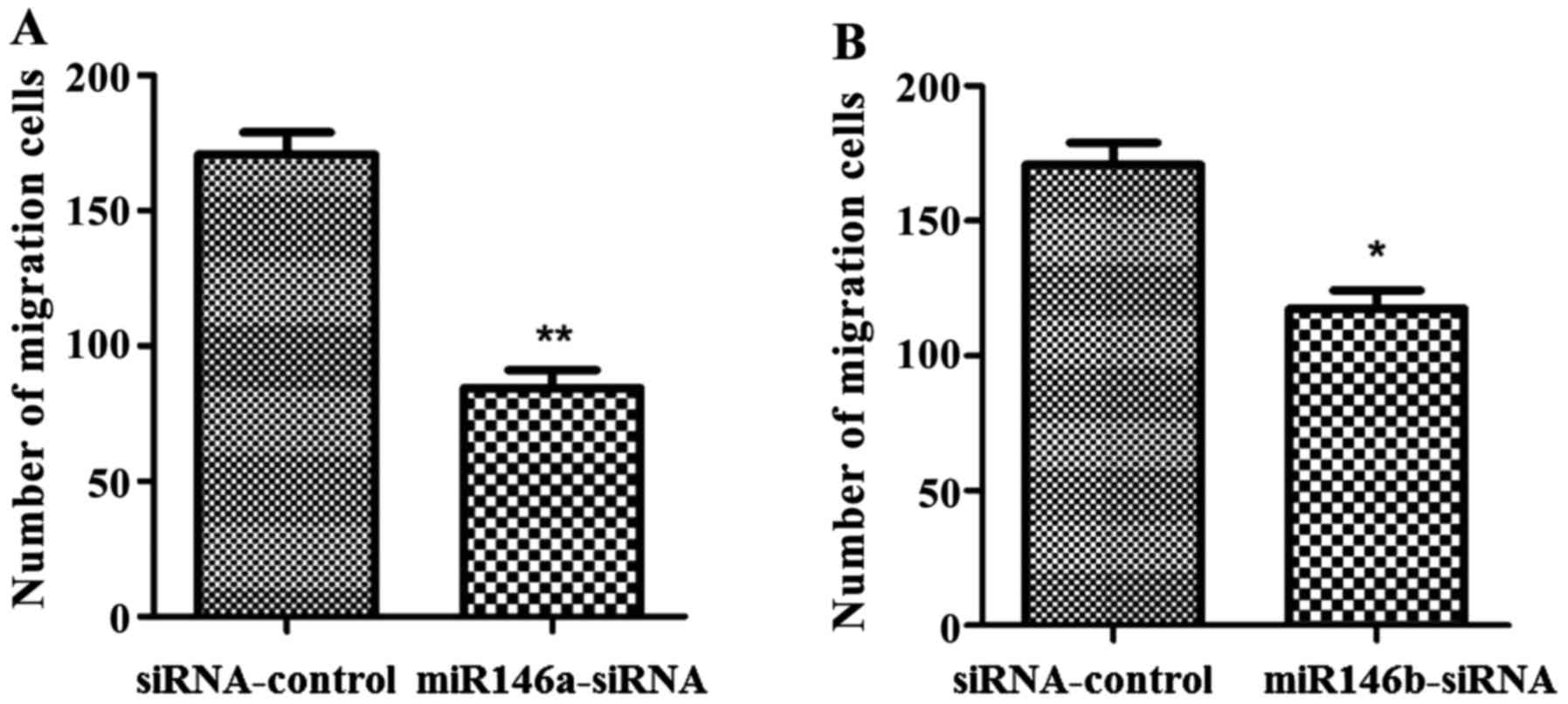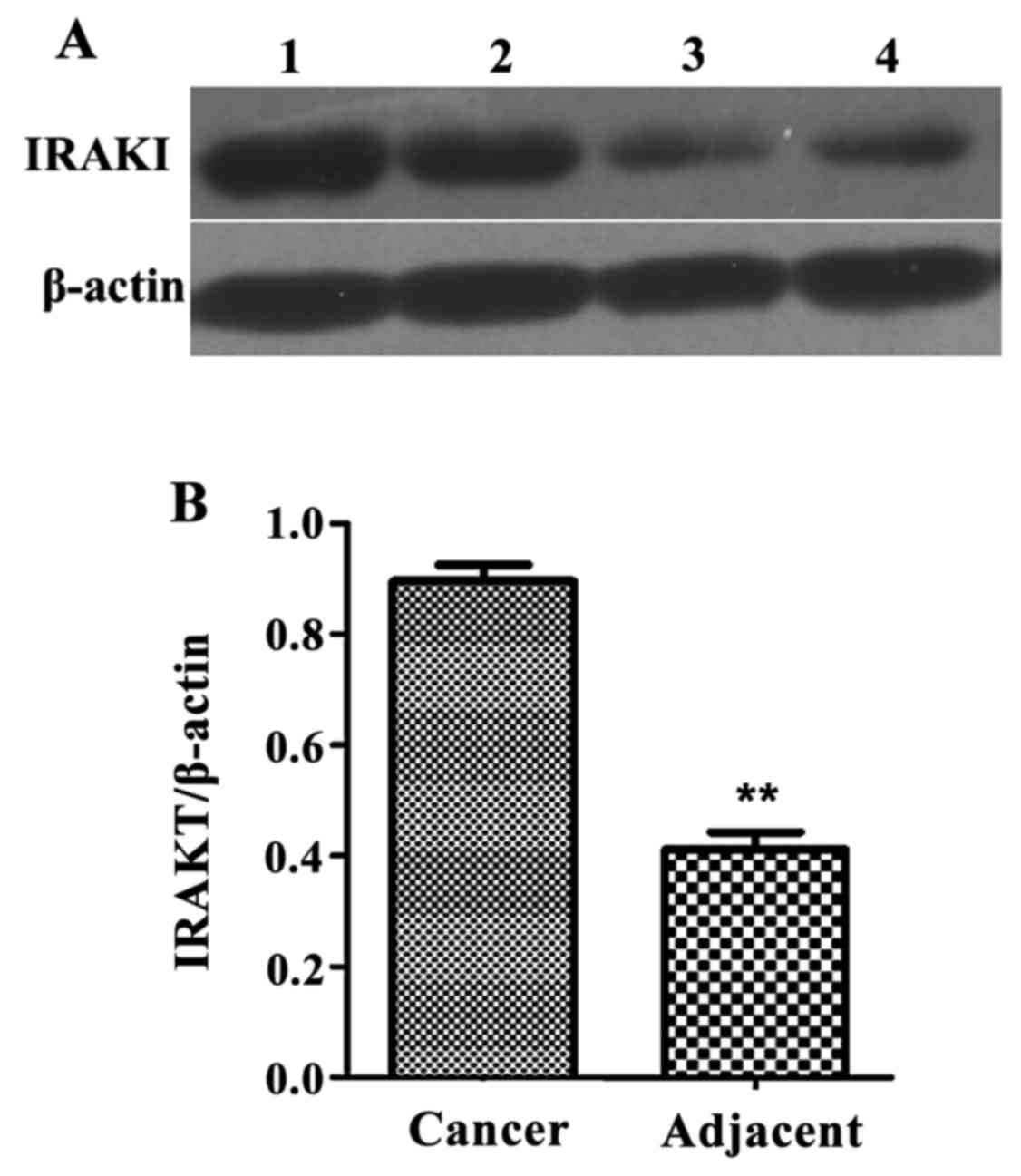|
1
|
Lai XJ, Zhang B, Jiang YX, Li JC, Zhao RN,
Yang X, Zhang Q, Zhang XY, Li WB and Zhu SL: High risk of lateral
nodal metastasis in lateral solitary solid papillary thyroid
cancer. Ultrasound Med Biol. 42:75–81. 2016. View Article : Google Scholar : PubMed/NCBI
|
|
2
|
Liu TR, Su X, Qiu WS, Chen WC, Men QQ, Zou
L, Li ZQ, Fu XY and Yang AK: Thyroid-stimulating hormone receptor
affects metastasis and prognosis in papillary thyroid carcinoma.
Eur Rev Med Pharmacol Sci. 20:3582–3591. 2016.PubMed/NCBI
|
|
3
|
Wojakowska A, Chekan M, Marczak Ł,
Polanski K, Lange D, Pietrowska M and Widlak P: Detection of
metabolites discriminating subtypes of thyroid cancer: Molecular
profiling of FFPE samples using the GC/MS approach. Mol Cell
Endocrinol. 417:149–157. 2015. View Article : Google Scholar : PubMed/NCBI
|
|
4
|
Tan A, Stewart CJ, Garrett KL, Rye M and
Cohen PA: Novel BRAF and KRAS mutations in papillary thyroid
carcinoma arising in struma ovarii. Endocr Pathol. 26:296–301.
2015. View Article : Google Scholar : PubMed/NCBI
|
|
5
|
Soylu L, Aydin OU, Ozbas S, Bilezikci B,
Ilgan S, Gursoy A and Kocak S: The impact of the multifocality and
subtypes of papillary thyroid carcinoma on central compartment
lymph node metastasis. Eur Rev Med Pharmacol Sci. 20:3972–3979.
2016.PubMed/NCBI
|
|
6
|
Kamaya A, Tahvildari AM, Patel BN,
Willmann JK, Jeffrey RB and Desser TS: Sonographic detection of
extracapsular extension in papillary thyroid cancer. J Ultrasound
Med. 34:285–297. 2015. View Article : Google Scholar
|
|
7
|
Li B, Yang XX, Wang D and Ji HK:
MicroRNA-138 inhibits proliferation of cervical cancer cells by
targeting c-Met. Eur Rev Med Pharmacol Sci. 20:1109–1114.
2016.PubMed/NCBI
|
|
8
|
Shu XL, Fan CB, Long B, Zhou X and Wang Y:
The anti-cancer effects of cisplatin on hepatic cancer are
associated with modulation of miRNA-21 and miRNA-122 expression.
Eur Rev Med Pharmacol Sci. 20:4459–4465. 2016.PubMed/NCBI
|
|
9
|
Sharma N, Verma R, Kumawat KL, Basu A and
Singh SK: miR-146a suppresses cellular immune response during
Japanese encephalitis virus JaOArS982 strain infection in human
microglial cells. J Neuroinflammation. 12:302015. View Article : Google Scholar : PubMed/NCBI
|
|
10
|
Al-Ansari MM and Aboussekhra A:
miR-146b-5p mediates p16-dependent repression of IL-6 and
suppresses paracrine procarcinogenic effects of breast stromal
fibroblasts. Oncotarget. 6:30006–30016. 2015. View Article : Google Scholar : PubMed/NCBI
|
|
11
|
Rafiee-Pour HA, Behpour M and Keshavarz M:
A novel label-free electrochemical miRNA biosensor using methylene
blue as redox indicator: Application to breast cancer biomarker
miRNA-21. Biosens Bioelectron. 77:202–207. 2016. View Article : Google Scholar : PubMed/NCBI
|
|
12
|
Esposito CL, Catuogno S and de Franciscis
V: Aptamer-MiRNA conjugates for cancer cell-targeted delivery.
Methods Mol Biol. 1364:197–208. 2016. View Article : Google Scholar : PubMed/NCBI
|
|
13
|
Williams J, Smith F, Kumar S, Vijayan M
and Reddy PH: Are microRNAs true sensors of ageing and cellular
senescence? Ageing Res Rev. 17:435–447. 2016.
|
|
14
|
Wei Q, Lei R and Hu G: Roles of miR-182 in
sensory organ development and cancer. Thorac Cancer. 6:2–9. 2015.
View Article : Google Scholar : PubMed/NCBI
|
|
15
|
Shi Z, Johnson JJ, Jiang R, Liu Y and
Stack MS: Decrease of miR-146a is associated with the
aggressiveness of human oral squamous cell carcinoma. Arch Oral
Biol. 60:1416–1427. 2015. View Article : Google Scholar : PubMed/NCBI
|
|
16
|
Liu X, Xu B, Li S, Zhang B, Mao P, Qian B,
Guo L and Ni P: Association of SNPs in miR-146a, miR-196a2, and
miR-499 with the risk of endometrial/ovarian cancer. Acta Biochim
Biophys Sin (Shanghai). 47:564–566. 2015. View Article : Google Scholar : PubMed/NCBI
|
|
17
|
Stückrath I, Rack B, Janni W, Jäger B,
Pantel K and Schwarzenbach H: Aberrant plasma levels of circulating
miR-16, miR-107, miR-130a and miR-146a are associated with lymph
node metastasis and receptor status of breast cancer patients.
Oncotarget. 6:13387–13401. 2015. View Article : Google Scholar : PubMed/NCBI
|
|
18
|
Zhang WJ, Wang H, Tong QX, Jie SH, Yang DL
and Peng C: nvolvement of TLR2-MyD88 in abnormal expression of
miR-146a in peripheral blood monocytes of patients with chronic
hepatitis C. J Huazhong Univ Sci Technolog Med Sci. 35:266–271.
2015. View Article : Google Scholar
|
|
19
|
Chen L, Dai YM, Ji CB, Yang L, Shi CM, Xu
GF, Pang LX, Huang FY, Zhang CM and Guo XR: MiR-146b is a regulator
of human visceral preadipocyte proliferation and differentiation
and its expression is altered in human obesity. Mol Cell
Endocrinol. 393:65–74. 2014. View Article : Google Scholar : PubMed/NCBI
|
|
20
|
Liu J, Xu J, Li H, Sun C, Yu L, Li Y, Shi
C and Zhou X: miR-146b-5p functions as a tumor suppressor by
targeting TRAF6 and predicts the prognosis of human gliomas. J Cell
Physiol. 231:328–335. 2015.PubMed/NCBI
|
















